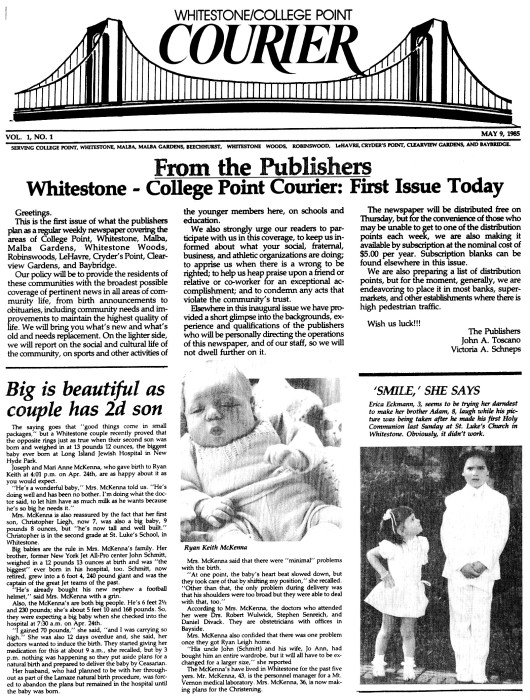By Matt Townsend
Shortly after Tricia Brouk arrived in New York from St. Louis in the early 1990s, the 20-something settled into her apartment in the East Village and made a career for herself as a choreographer and dancer.
More than 17 years later, she still lives at the corner of Avenue A and East 11th St., but what she once called an old-school New York building where people looked after each other has become something of a nightmare.
“It makes me feel unsafe,” said Brouk, 37. “It makes feel threatened.”
Brouk uses such language to describe life in her apartment at 500 E. 11th St., where she said the building has had sporadic hot water and heat for the past four years. In addition, since the private real estate investment firm Westbrook Partners purchased it — along with 16 other buildings in the East Village for $97 million — in May of last year, conditions have worsened, with ongoing construction, broken front doors and little, if any, response to complaints. City records show that 51 complaints have been made by building residents in the past year, compared to just 10 the previous year. And 20 of the complaints in the past year are still listed as open by the city’s Department of Housing Preservation and Development. In the 17 buildings combined, there have been 58 more complaints in the past year compared to the year before.
“I can’t live a comfortable life,” said Brouk, who didn’t have hot water for two days early last week in her rent-stabilized apartment. “I’m constantly worried that I won’t have heat or hot water.”
Westbrook Partners, which has offices all over the world, including New York, Paris and Tokyo, did not respond to an interview request for this article.
Housing advocates believe that Brouk’s troubles over the past year aren’t an isolated incident. Rather, they feel they are part of a coordinated effort by Westbrook and the management company it employs to decrease services and quality of life in order to increase vacancy rates in all the buildings, which include many rent-regulated apartments, and thereby improve returns for their investors. Tenant advocates say these actions coincide with a citywide increase in rent-regulated buildings being purchased by private investment firms; these firms use what the advocates deem harassment tactics to flip rent-regulated apartments to make return rates of 16 percent to 20 percent, which double traditional returns for residential buildings.
“They need to drive a strategy that can double the historic rate of profit,” said Benjamin Dulchin, deputy director for the Association for Neighborhood and Housing Development. “The only way you can do that is creating more vacancies than you would normally see.”
The yearly vacancy rates of rent-regulated apartments is about 6 percent. But Brandon Kielbasa, an organizer and affordable housing advocate with the Cooper Square Committee, who has personally surveyed all but two of the buildings, estimates the turnover rate since Westbrook purchased the buildings last year has been about 40 percent, or roughly 100 tenants.
“They are pretty savvy on how to get tenants out,” said Kielbasa, who has had tenants from the Westbrook buildings seeking help from his office since last August. “Sometimes it’s subtle things and other times it’s not so subtle.”
Kielbasa said tenants have dealt with nonrenewal notices when they had a legal right to the apartment, the management company claiming it didn’t receive a rent check, being pursued in Housing Court and delayed responses to complaints. Housing Court records show that management, via the law firm Bauman Katz & Grill, brought 12 cases against tenants in the past year, six of which resulted in a tenant losing an apartment, with a few others still in court.
“It’s very confusing because you don’t know what’s going on,” said a man who lives in a Westbrook building, but didn’t want to be identified. “But it’s been very good that our building has started to talk to each other, and you start to realize that there is a pattern of intimidation. Then you talk to other buildings and see a pattern and what might be done to you next.”
A.N.H.D. recently started to call the practice of private-equity firms buying rent-regulated buildings “predatory equity” and estimated that such firms purchased 90,000 units in New York City in the past four years. A.N.H.D. obtained documents from other funds with holdings in the city that explicitly state 20 percent to 30 percent turnover rates in the first year as a goal, but hasn’t found such documents for Westbrook.
“It’s only very recently that private-equity funds have felt confident enough to go in more problematic neighborhoods where there is more rent-regulated housing,” Dulchin said.
Seth Donlin, an H.P.D. spokesperson, said he recently fielded more questions about private real estate investment firms buying rent-regulated apartments but didn’t know what could be done besides holding them accountable to current laws.
“We can’t say which company can buy a building, but they have to follow the rules,” Donlin said. “If there is tenant harassment, there is a way to take care of that through the courts.”
The East Village and Lower East Side have thousands of rent-regulated apartments, which is why Community Board 3 last month approved a resolution written by the Cooper Square Committee to create awareness on the issue and to prod Westbrook representatives to show up at a meeting to discuss tenant complaints. Westbrook had declined to attend past meetings. The board had already developed a relationship with the Cooper Square Committee in which C.B. 3 approaches city agencies about problems in the Westbrook buildings and Cooper Square directly helps tenants.
“Affordable housing is a priority at this board, and Westbrook is affecting it,” said Susan Stetzer, C.B. 3 district manager, who has lived in a rent-regulated apartment in the district for 30 years. “It’s a huge problem and it’s changing the nature of the community.”
















